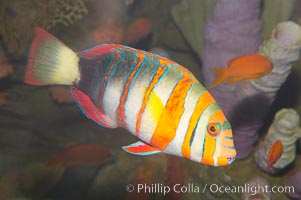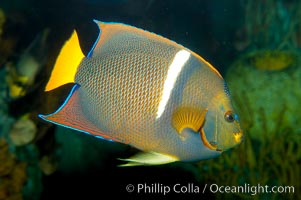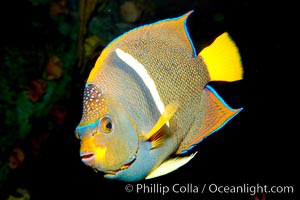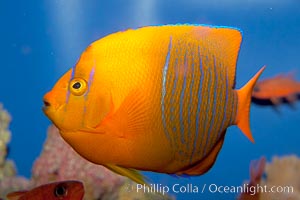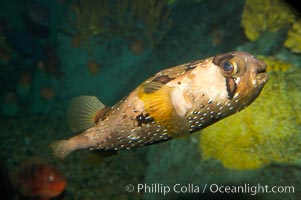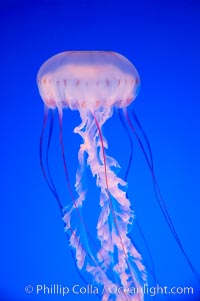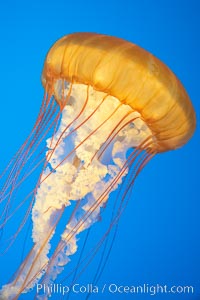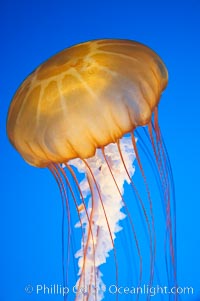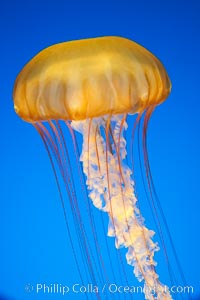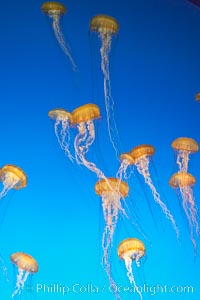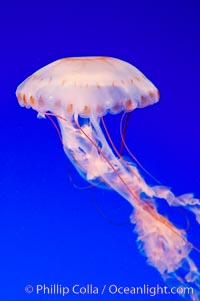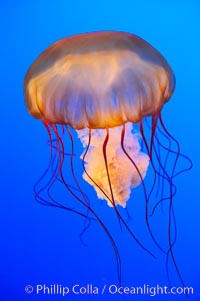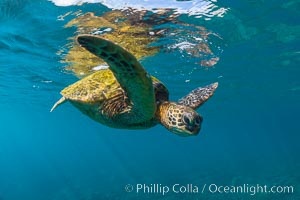
Green sea turtle Chelonia mydas, West Maui, Hawaii.
Species: Green sea turtle, Chelonia mydas
Location: Maui, Hawaii
Image ID: 34512
Species: Green sea turtle, Chelonia mydas
Location: Maui, Hawaii
Image ID: 34512
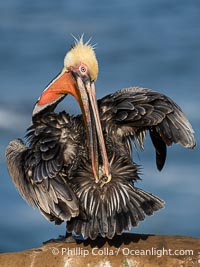
A brown pelican preening, reaching with its beak to the uropygial gland (preen gland) near the base of its tail. Preen oil from the uropygial gland is spread by the pelican's beak and back of its head to all other feathers on the pelican, helping to keep them water resistant and dry. Adult winter breeding plumage.
Species: Brown Pelican, Pelecanus occidentalis, Pelecanus occidentalis californicus
Location: La Jolla, California
Image ID: 40019
Species: Brown Pelican, Pelecanus occidentalis, Pelecanus occidentalis californicus
Location: La Jolla, California
Image ID: 40019
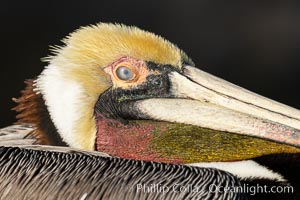
Brown pelican nictitating membrane, a translucent membrane that forms an inner eyelid in birds, reptiles, and some mammals. It can be drawn across the eye to protect it while diving in the ocean, from sand and dust and keep it moist.
Species: Brown Pelican, Pelecanus occidentalis, Pelecanus occidentalis californicus
Location: La Jolla, California
Image ID: 36718
Species: Brown Pelican, Pelecanus occidentalis, Pelecanus occidentalis californicus
Location: La Jolla, California
Image ID: 36718
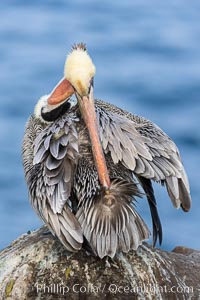
A brown pelican preening, reaching with its beak to the uropygial gland (preen gland) near the base of its tail. Preen oil from the uropygial gland is spread by the pelican's beak and back of its head to all other feathers on the pelican, helping to keep them water resistant and dry.
Species: Brown Pelican, Pelecanus occidentalis, Pelecanus occidentalis californicus
Location: La Jolla, California
Image ID: 37655
Species: Brown Pelican, Pelecanus occidentalis, Pelecanus occidentalis californicus
Location: La Jolla, California
Image ID: 37655
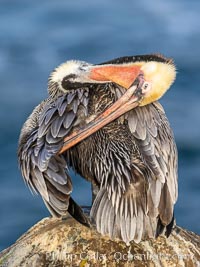
A California brown pelican preening, rubbing the back of its head and neck on the uropygial gland (preen gland) near the base of its tail. Preen oil from the uropygial gland is spread by the pelican's beak and back of its head to all other feathers on the pelican, helping to keep them water resistant and dry.
Species: Brown Pelican, Pelecanus occidentalis, Pelecanus occidentalis californicus
Location: La Jolla, California
Image ID: 37658
Species: Brown Pelican, Pelecanus occidentalis, Pelecanus occidentalis californicus
Location: La Jolla, California
Image ID: 37658
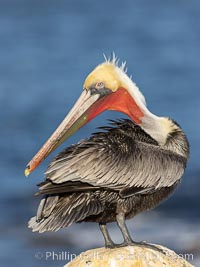
Parsvottanasana, triangle pose, pelican yoga. A brown pelican preening, reaching with its beak to the uropygial gland (preen gland) near the base of its tail. Preen oil from the uropygial gland is spread by the pelican's beak and back of its head to all other feathers on the pelican, helping to keep them water resistant and dry.
Species: Brown Pelican, Pelecanus occidentalis, Pelecanus occidentalis californicus
Location: La Jolla, California
Image ID: 37725
Species: Brown Pelican, Pelecanus occidentalis, Pelecanus occidentalis californicus
Location: La Jolla, California
Image ID: 37725
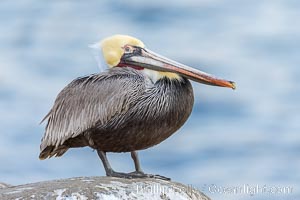
Brown pelican nictitating membrane, a translucent membrane that forms an inner eyelid in birds, reptiles, and some mammals. It can be drawn across the eye to protect it while diving in the ocean, from sand and dust and keep it moist.
Species: Brown Pelican, Pelecanus occidentalis, Pelecanus occidentalis californicus
Location: La Jolla, California
Image ID: 38601
Species: Brown Pelican, Pelecanus occidentalis, Pelecanus occidentalis californicus
Location: La Jolla, California
Image ID: 38601
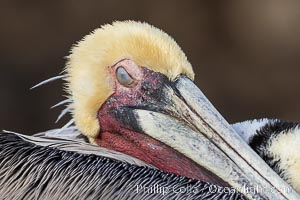
Brown pelican nictitating membrane, a translucent membrane that forms an inner eyelid in birds, reptiles, and some mammals. It can be drawn across the eye to protect it while diving in the ocean, from sand and dust and keep it moist.
Species: Brown Pelican, Pelecanus occidentalis, Pelecanus occidentalis californicus
Location: La Jolla, California
Image ID: 38873
Species: Brown Pelican, Pelecanus occidentalis, Pelecanus occidentalis californicus
Location: La Jolla, California
Image ID: 38873
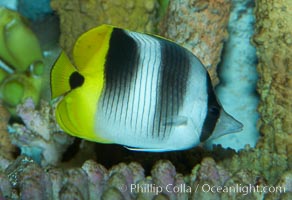
Pacific double-saddle butterflyfish.
Species: Pacific double-saddle butterflyfish, Chaetodon ulietensis
Image ID: 11817
Species: Pacific double-saddle butterflyfish, Chaetodon ulietensis
Image ID: 11817
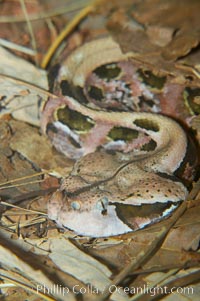
African gaboon viper camouflage blends into the leaves of the forest floor. This heavy-bodied snake is one of the largest vipers, reaching lengths of 4-6 feet (1.5-2m). It is nocturnal, living in rain forests in central Africa. Its fangs are nearly 2 inches (5cm) long.
Species: African gaboon viper, Bitis gabonica
Image ID: 12576
Species: African gaboon viper, Bitis gabonica
Image ID: 12576
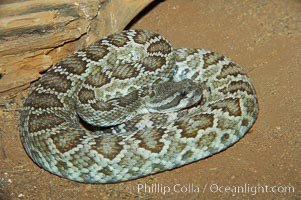
Southern Pacific rattlesnake. The southern Pacific rattlesnake is common in southern California from the coast through the desert foothills to elevations of 10,000 feet. It reaches 4-5 feet (1.5m) in length.
Species: Southern pacific rattlesnake, Crotalus viridis helleri
Image ID: 12585
Species: Southern pacific rattlesnake, Crotalus viridis helleri
Image ID: 12585
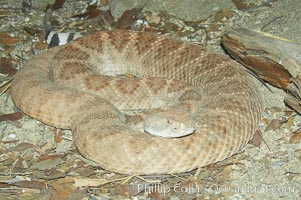
Western diamondback rattlesnake.
Species: Western diamondback rattlesnake, Crotalus atrox
Image ID: 12809
Species: Western diamondback rattlesnake, Crotalus atrox
Image ID: 12809
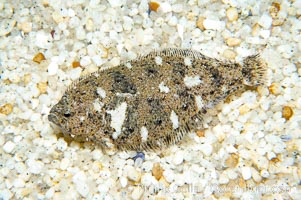
A small (2 inch) sanddab is well-camouflaged amidst the grains of sand that surround it.
Species: Sanddabs, Citharichthys
Image ID: 14936
Species: Sanddabs, Citharichthys
Image ID: 14936
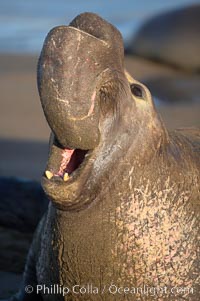
Bull elephant seal, adult male, bellowing. Its huge proboscis is characteristic of male elephant seals. Scarring from combat with other males. Central California.
Species: Elephant seal, Mirounga angustirostris
Location: Piedras Blancas, San Simeon, California
Image ID: 15387
Species: Elephant seal, Mirounga angustirostris
Location: Piedras Blancas, San Simeon, California
Image ID: 15387
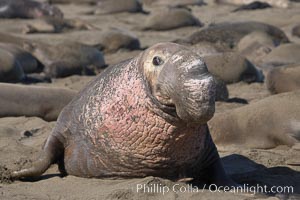
This bull elephant seal, an old adult male, shows extreme scarring on his chest and proboscis from many winters fighting other males for territory and rights to a harem of females. Sandy beach rookery, winter, Central California.
Species: Elephant seal, Mirounga angustirostris
Location: Piedras Blancas, San Simeon, California
Image ID: 15388
Species: Elephant seal, Mirounga angustirostris
Location: Piedras Blancas, San Simeon, California
Image ID: 15388
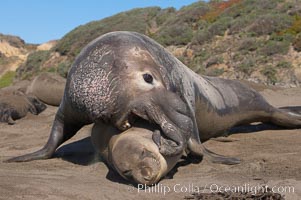
A bull elephant seal forceably mates (copulates) with a much smaller female, often biting her into submission and using his weight to keep her from fleeing. Males may up to 5000 lbs, triple the size of females. Sandy beach rookery, winter, Central California.
Species: Elephant seal, Mirounga angustirostris
Location: Piedras Blancas, San Simeon, California
Image ID: 15408
Species: Elephant seal, Mirounga angustirostris
Location: Piedras Blancas, San Simeon, California
Image ID: 15408
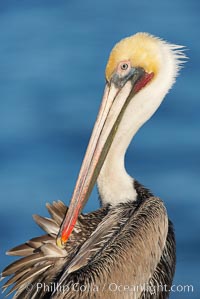
A brown pelican preening, reaching with its beak to the uropygial gland (preen gland) near the base of its tail. Preen oil from the uropygial gland is spread by the pelican's beak and back of its head to all other feathers on the pelican, helping to keep them water resistant and dry. Adult winter non-breeding plumage showing white hindneck and red gular throat pouch.
Species: Brown Pelican, Pelecanus occidentalis, Pelecanus occidentalis californicus
Location: La Jolla, California
Image ID: 18045
Species: Brown Pelican, Pelecanus occidentalis, Pelecanus occidentalis californicus
Location: La Jolla, California
Image ID: 18045
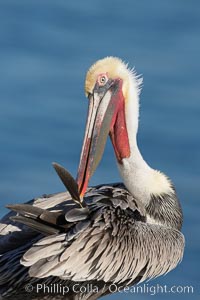
A brown pelican preening, reaching with its beak to the uropygial gland (preen gland) near the base of its tail. Preen oil from the uropygial gland is spread by the pelican's beak and back of its head to all other feathers on the pelican, helping to keep them water resistant and dry. Adult winter non-breeding plumage showing white hindneck and red gular throat pouch.
Species: Brown Pelican, Pelecanus occidentalis, Pelecanus occidentalis californicus
Location: La Jolla, California
Image ID: 18209
Species: Brown Pelican, Pelecanus occidentalis, Pelecanus occidentalis californicus
Location: La Jolla, California
Image ID: 18209
